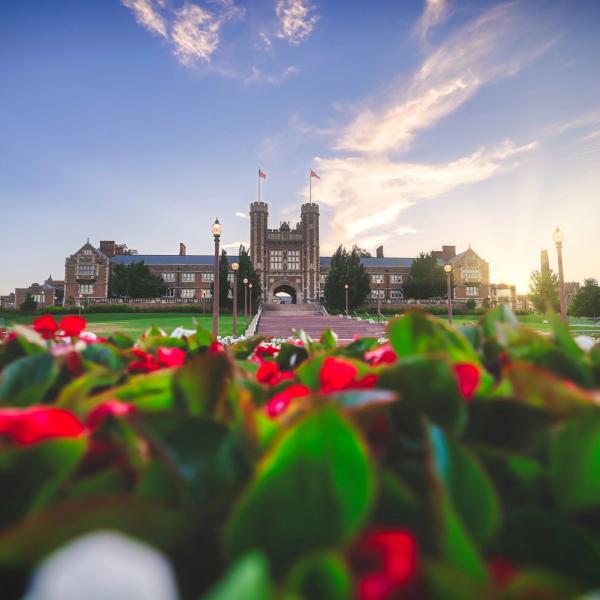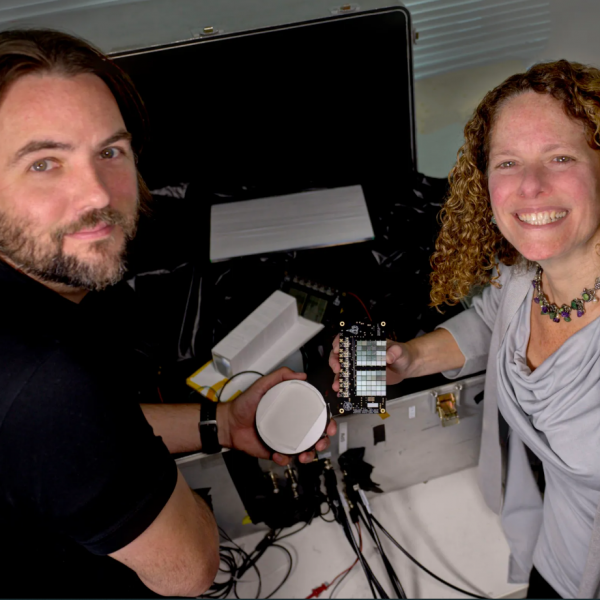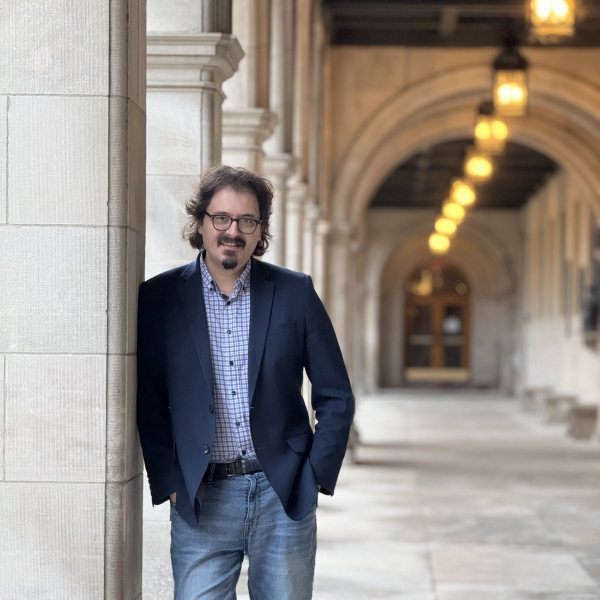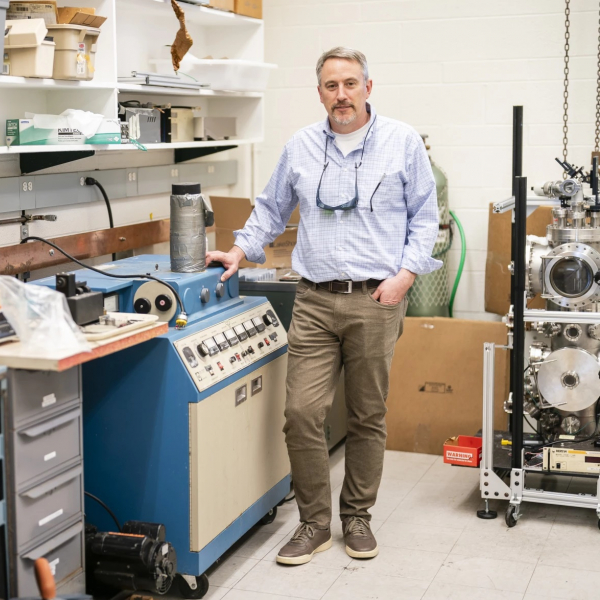Arts & Sciences scholars are teaming up with researchers across WashU to develop new tools to probe the fundamental forces that shape our world.
Quantum is a fascinating (if a bit mysterious) field that unites scholars across the natural sciences. While much of quantum science remains fantastical and futuristic, WashU researchers are already establishing themselves as pioneers in the field. Their quantum-powered advances — microscopes that can “see” magnetic fields and other properties, and diamond sensors that can track the most basic activities of living cells — could transform many areas of science and society.
“We’re working across disciplines and finding exciting new places to employ quantum technologies,” said Kater Murch, the Charles M. Hohenberg Professor of Physics.
We asked some of WashU’s brightest minds to tell us about their work and how it's shaping the future.
What is quantum science?
Quantum research investigates the stuff that happens at the super-small scale, such as the forces between atoms and the behavior of electrons. At this level, nature often acts in ways that strain comprehension — even for scientists!
Here’s one example: quantum physics tells us light and matter take forms that are both particles and waves, an impossible-to-visualize dual existence that can only be described by math.
“Quantum science seems magical because it defies our experience of the world,” said Sophia Hayes, professor of chemistry.
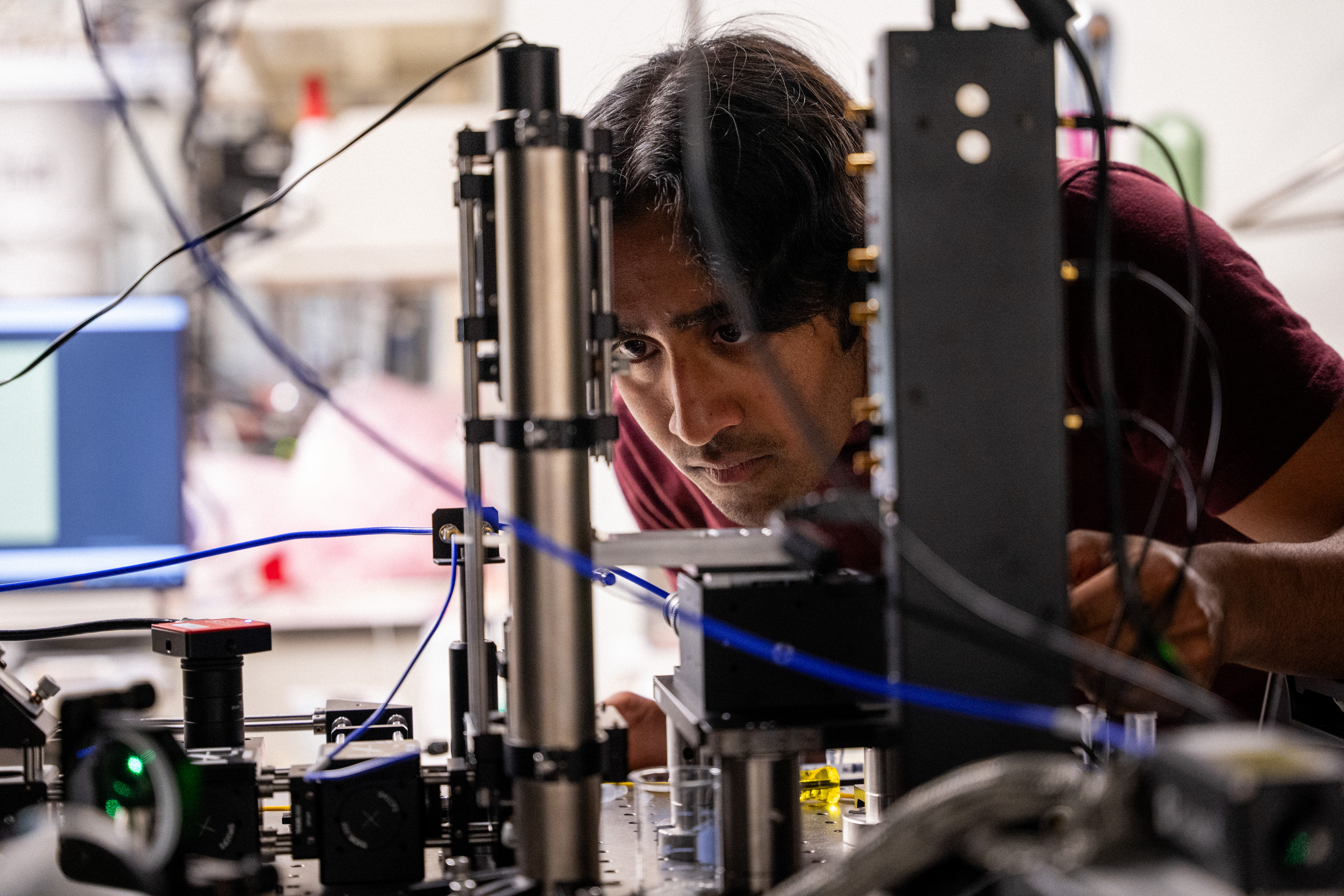
Where is quantum research happening at WashU?
Much of the quantum research at WashU is taking place through the Center for Quantum Leaps, a signature initiative of the Arts & Sciences Strategic Plan. Launched in 2022 after years of planning, the CQL is working to pursue novel research in the areas of astrophysics, quantum devices, and quantum computing algorithm development. To create this quantum powerhouse, the university recruited some of the top scholars in the field and gave them the resources they needed to pursue groundbreaking science.
“The Center for Quantum Leaps is positioning WashU to be at the forefront of quantum research,” said Feng Sheng Hu, the Richard G. Engelsmann Dean of Arts & Sciences. “Our exceptional scholars are collaborating to pursue novel lines of inquiry that will profoundly reshape our knowledge and application of science, medicine, and technology.”
Because quantum science can be applied to so many fields, Arts & Sciences researchers frequently collaborate with the School of Medicine, the McKelvey School of Engineering, and the McDonnell Center for the Space Sciences.
“The collaborative culture of WashU makes it an ideal environment for quantum advances,” Murch said.
Will WashU’s quantum research have a direct impact on St. Louis?
Yes. A team of WashU scientists — Kater Murch, Sophia Hayes, and Erik Henriksen of Arts & Sciences and Sheretta Butler-Barnes of the Brown School — received a $3 million grant from the National Science Foundation to create a graduate student training program for aspiring scientists and educators who want to explore careers in quantum sensing.
The program, Linking Quantum Sensing Technologies across Disciplines, will connect quantum-minded researchers at St. Louis-area companies with educators at WashU, the University of Missouri-St. Louis, Saint Louis University, and Harris-Stowe State University to develop a network of experts who can make St. Louis a national leader in quantum sensing.
The goal, Hayes said, is to build a diverse, quantum-technology-enabled workforce that can lead innovation in St. Louis and beyond.
What are some potential applications of quantum science?
WashU scientists are focusing on three game-changing uses of quantum science: sensing, computing, and, eventually, communication.
Researchers have already made great strides in pushing the boundaries of quantum sensing. Using various devices and approaches, they can harness quantum phenomena to measure and detect novel properties of atoms and molecules in anything from a rock to a human cell. These technologies allow scientists to see infinitesimal properties that would be invisible to even the most powerful conventional microscopes.
“Everybody agrees quantum sensing is going to provide transformative advantages,” Murch said. “We just have to find the right ways to use it and do the engineering to make it possible.”
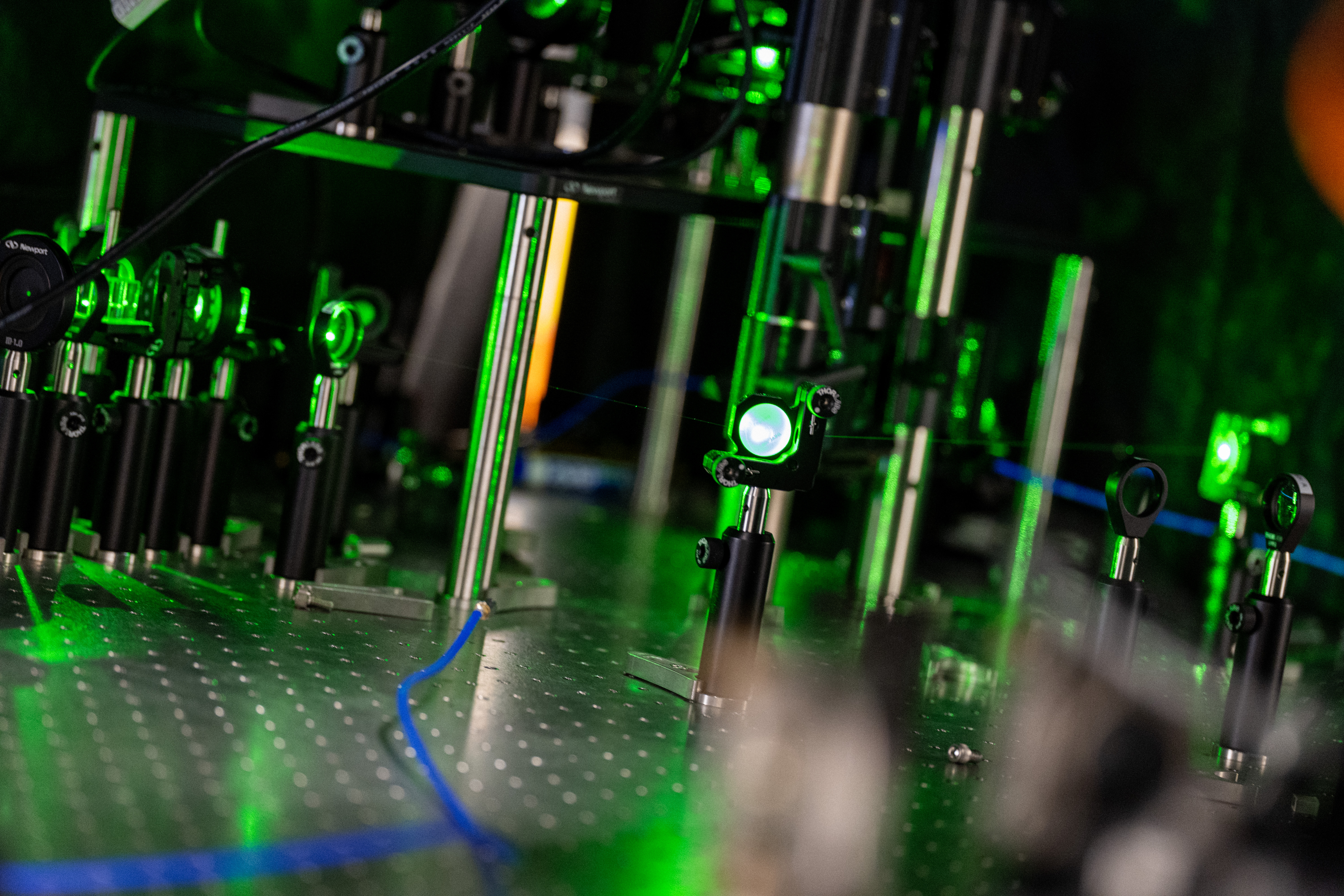
What kinds of devices are used for quantum sensing?
Ever heard of a microscope powered by diamonds? WashU has two. Chong Zu and Shankar Mukherji, both assistant professors of physics, helped build one of the university’s quantum diamond microscopes, cutting-edge devices using quantum principles to offer insights far beyond the reach of typical optical microscopes.
The WashU-built microscope, completed in spring 2023, features nanodiamonds that scientists blasted with beams of nitrogen. These rays knock out atoms of carbon, leaving vacant spaces in the diamond that quickly fill with electrons extremely sensitive to outside forces, including temperature and magnetism. By tracking how the electrons in the nanodiamond respond to their environment, researchers can see the world with new levels of precision. “You can get images of magnetic fields at a nanoscale, which is unique,” Zu said.
Lan Yang, the Edwin H. & Florence G. Skinner Professor of Electrical and Systems Engineering in the McKelvey School, has published more than 100 technical papers and received 11 patents for her work in photonics, the study of light. Her research centers around the fundamental understanding of interactions between light and matter at ultrasmall (nanometer and micrometer) scales. Her team is developing innovative devices and systems that can harness the quantum nature of light to achieve a new class of sensors.
One of Yang’s inventions is an optical sensor that can detect and trap beams of light into a device smaller than a human hair. She calls the sensors “whispering galleries” because light moves inside the devices much like sound travels along the curved ceilings of a cathedral, where even faint whispers are amplified.
Yang’s technology could be useful for communication that uses light to carry information. It also has the power to detect tiny airborne particles by collecting reflected light, an application with major implications for environmental monitoring and public health. Her team has already shown the sensor’s ability to detect airborne flu viruses, and she said portable biosensors might be able to eventually warn of invisible viruses and other threats.
Erik Henriksen, associate professor of physics, builds quantum-enabled sensors using atomically thin materials that can measure across vastly different scales, up to and including the movement of the planet.
Henriksen is part of a team that received a National Science Foundation award that seeks to create a quantum sensor based on 2D materials suspended in liquid helium. The super-sensitive device should be able to detect minute changes in the Earth’s rotation and allow for navigation without relying on GPS.
"Quantum science seems magical because it defies our experience of the world."
How is quantum advancing medical research?
David Piston, co-director of the Center for Quantum Leaps, is leading the effort to integrate quantum sensing into medicine. To do this, he and other researchers are attempting to insert nanodiamond sensors into living cells, a process that could allow for dynamic imaging of never-before-seen biological processes. “Whenever you’re trying to do something smaller, better, and faster, a quantum approach can be very effective,” said Piston, the Edward J. Mallinckrodt, Jr. Professor and Head of Cell Biology & Physiology.
A renowned expert in diabetes research, Piston is especially interested in the flow of energy in and out of cells. His work gets to the very essence of what drives our bodies. Specifically, he’s looking at the mitochondria in human cells that work to convert glucose and fat into the energy compound ATP. The body’s cellular machinery must heat slightly for this process to work, a temperature change too subtle for conventional probes and thermometers. That’s where quantum sensing comes in.
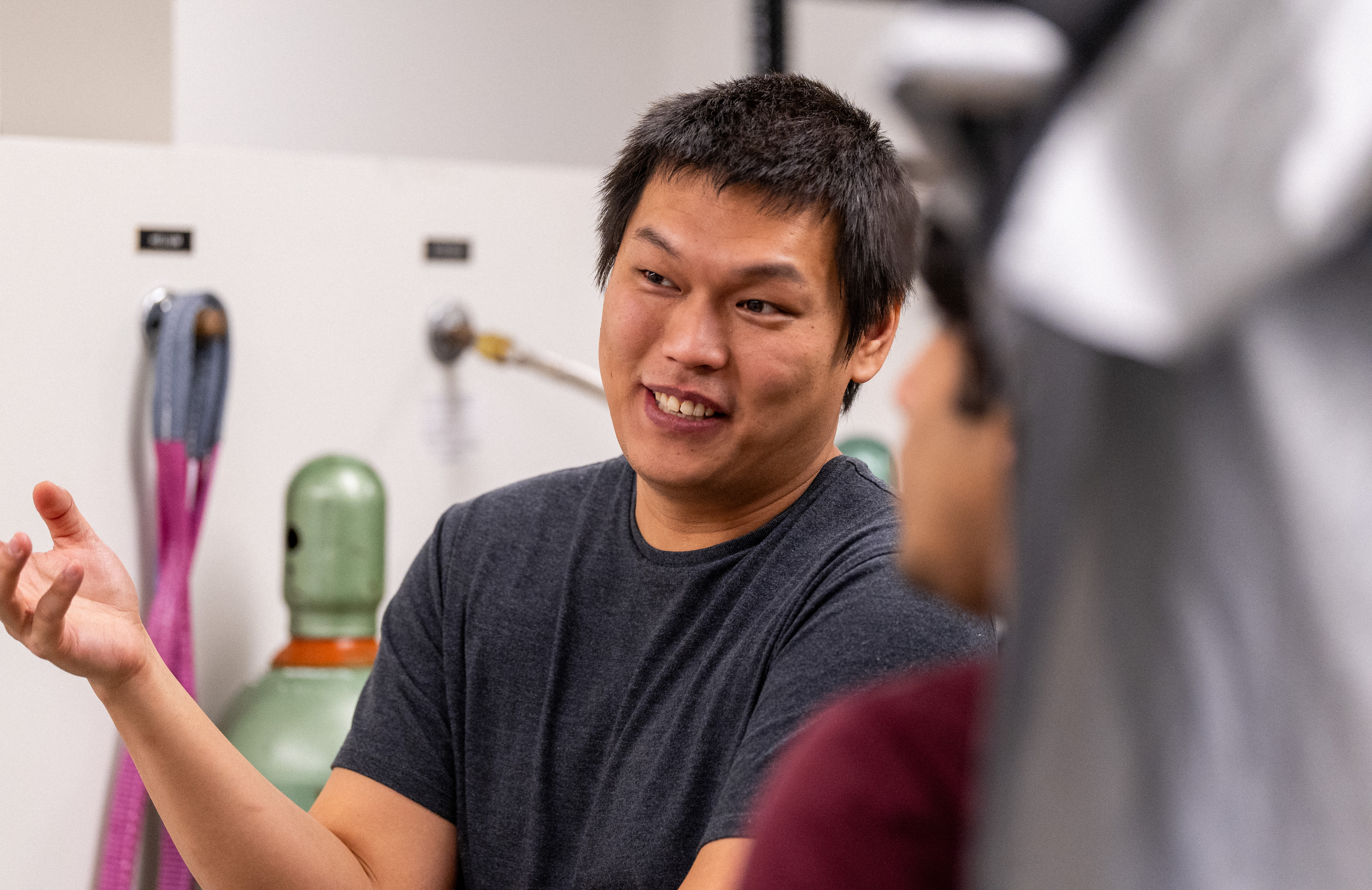
By collaborating with Chong Zu in the physics department, Piston has been making progress on a key research challenge: finding the best way to get a super-sensitive quantum sensor into a human cell. “We can put the cells into a liquid and add a few nanodiamonds,” he said. “If we perturb the cells either by a poke or a little electrical pulse, some of the nanodiamonds will be taken into the cells.”
Early experiments have been promising, he said, but it will take more testing to insert the diamond sensors in a way that targets key parts of a cell. If they can, one potential application of this work could be a deeper understanding of how different chemicals affect mitochondria, which, in turn, could improve treatments for diabetes and obesity.
What is quantum computing and how is WashU involved in its development?
Quantum computing refers to new technologies that could shatter our current limits on power and speed by using the quantum properties of particles — instead of electrical impulses — to code and carry information. Here are a few examples of how Arts & Sciences researchers are pursuing this critical work.
Kade Head-Marsden, an assistant professor of chemistry hired in 2022 as part of Arts & Sciences’ Digital Transformation Initiative, is exploring the use of quantum computers to solve challenging problems in quantum chemistry.
Sheng Ran, assistant professor of physics, won a prestigious National Science Foundation CAREER grant last year to support his quest to create new materials that could be used for quantum computing and electronics.
Ran and Murch also won an internal Arts & Sciences SPEED grant to fund their initial work building a quantum computer powered by a new superconductor — first described by Ran and others in 2019 — containing uranium and tellurium.
(Photos by Sean Garcia for Washington University)


